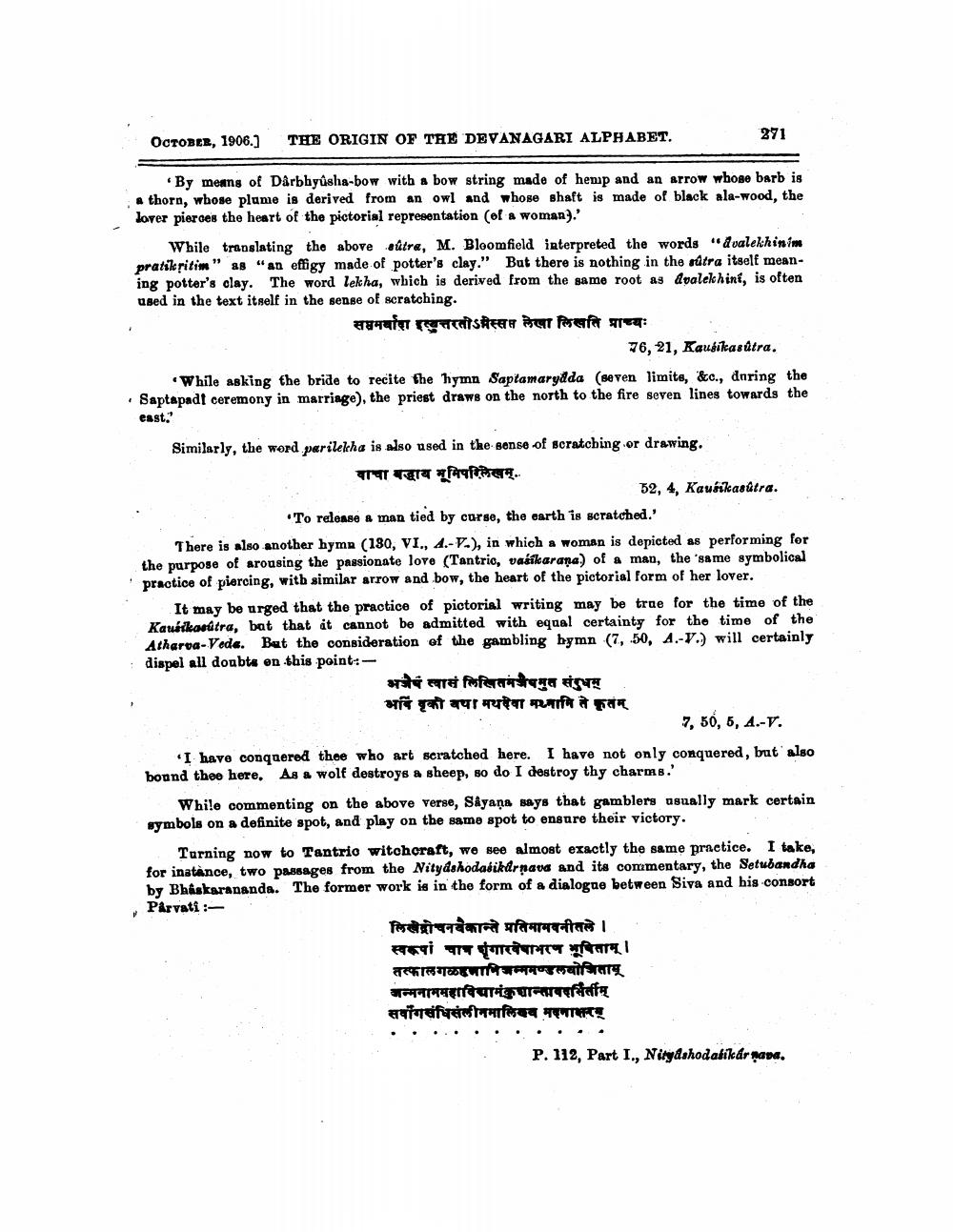________________
OCTOBER, 1906.]
THE ORIGIN OF THE DEVANAGARI ALPHABET.
271
. By means of Darbhyusha-bow with a bow string made of hemp and an arrow whose barb is * thorn, whose plame is derived from an owl and whose shaft is made of black ala-wood, the lover pierces the heart of the pictorial representation of a woman.'
While translating the above aútra, M. Bloomfield interpreted the words "dvalekhinim pratiksitim " as “an effigy made of potter's clay." But there is nothing in the rútra itself meaning potter's clay. The word lekha, which is derived from the same root as dvalekhini, is often used in the text itself in the sense of scratching. सनमा खुत्तरतोऽस्सप्त लेखा लिखति प्राच्या
76, 21, Kausikasútra.
While asking the bride to recite the hymn Saptamarydda (seven limits, &c., dnring the • Saptapadt ceremony in marringe), the priest draws on the north to the fire seven lines towards the east.' Similarly, the word pærilekha is also used in the sense of scratching or drawing. N TT tragitarer.
52, 4, Kauskasútra. "To reloase a man tied by curse, the earth is scratched.' There is also another hymn (180, VI., 4.-7.), in which a woman is depicted as performing for the purpose of arousing the passionate love (Tantric, vašíkarana) of a man, the 'same symbolical practice of piercing, with similar arrow and bow, the heart of the pictorial form of her lover.
It may be urged that the practice of pictorial writing may be true for the time of the Kaubikarútra, bat that it cannot be admitted with equal certainty for the time of the Atharva-Vede. Bet the consideration of the gambling hymn (7, 50, A.-V.) will certainly dispel all doubts on this point:
अजै स्वासं लिखितमपमुत संदुधम् भर्विवृको बया मथदेवा ममामि ते कृतम्
7, 50, 5, 4.-V. I have conquered thee who art scratched here. I have not only conquered, but also bound theo here. As a wolf destroys a sheep, so do I destroy thy charms.'
While commenting on the above verse, Sayaņa says that gamblers asually mark certain symbols on a definite spot, and play on the same spot to ensure their victory.
Tarning now to Tantrio witchcraft, we see almost exactly the same practice. I take, for instance, two passages from the Nitydshodasikdrnaud and its commentary, the Setubandha by Bhaskarananda. The former work is in the form of a dialogue between Siva and his consort Parvati :
लिखेद्रोचनबैकान्ते प्रतिमामवनीतले । स्वरूपां चाच शृंगारपेवाभरणभूषिताम् । तत्कालगळहनानिजम्ममण्डलबोषिताम् जन्मनाममहाविद्यामंकुधान्तावासिीम् सर्वांगसंधिसलीनमालिसव मनाशनम्
P. 112, Part I., Nitydahodabikár napa




